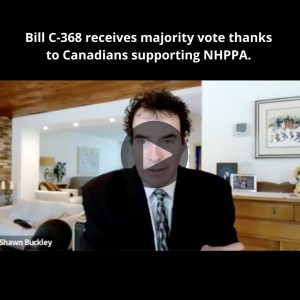 If you had a new idea about something that you thought no one, or very few people had ever had, you might call that a “novel” idea, and you might try to patent it, i.e. acquire intellectual property rights.
If you had a new idea about something that you thought no one, or very few people had ever had, you might call that a “novel” idea, and you might try to patent it, i.e. acquire intellectual property rights.
What is a Use-Patent?
For instance, even though you can’t patent a naturally existing herb or plant, if you had researched that plant and isolated one of its active compounds, and found a unique use or application for it, you could say “Though I can’t patent this plant, I am applying for a use-patent for the novel application of one of its constituents.” Once more, you would be patenting a specific use for that substance, not for the substance itself.
The problem with use-patents is that they are weak and hard to protect, as there can be a plethora of uses for something. That is of course unless you have some “Regulatory Assistance”.
Health Canada is used to providing such assistance to the pharmaceutical industry, just like they did with L-Carnitine.
Consider the Example of L-carnitine
L-carnitine is safe enough to be added to every infant formula on the market, and to be highly recommended for pregnant mothers.
So why was it illegal for sale in Canada for exactly 20 years?
Answer: In 1991, after Sigma Tau Pharmaceuticals filed a use-patent on L-carnitine for kidney disease, they developed a new drug called “Carnitor”.
Health Canada then placed L-Carnitine onto a restricted list of what they termed “new drugs,” whose safety, according to the agency, had not been proven. This made L-carnitine illegal to sell as a supplement in Canada, though for the whole period it was still safe enough for infant formulas.
Exactly 20 years later, in December of 2011, Sigma Tau’s use patent on L-carnitine expired. By January of 2012, L-carnitine was suddenly safe enough for all of us to purchase at health food stores again.
Use Patents and Natural Molecules
If this makes you ask how Health Canada can legally get away with such things, you’re not alone. Yet, make no mistake, providing Regulatory Assistance aimed at enforcing use-patents on natural molecules is exactly what Health Canada’s new regulatory proposals are designed for.
As always, they will boil the frog slowly and incrementally, and go product-by-product so Canadians don’t get too upset all at once. But, it is time to get upset or we are going to lose access to supplements we have taken for granted!
For example, a compound called apigenin (APG) occurs naturally in celery, parsley, and the herb chamomile. A 2019 review from the International Journal of Molecular Sciences, entitled “The Therapeutic Potential of Apigenin” says it well:
“A high number of studies carried out over the years have indicated that apigenin has many interesting pharmacological activities and nutraceutical potential. As an example, its properties as an antioxidant are well known, and it can also be a therapeutic agent to overcome diseases like inflammation, autoimmune, neurodegenerative disease, and even several types of cancers.”
It sounds like apigenin is a promising target for a use-patent!
Apigen (APG)… and How Many Others?
Two minutes of internet research yields the following in the journal Recent Patents on Inflammation & Allergy Drug Discovery:
PATENTS INVOLVING APG WITH VARIOUS THERAPEUTIC APPLICATIONS FILED DURING 2015 – 2018
“Numerous recent reviews of patents highlighting the importance of natural products in the process of new drug development have been published [28-33]. Several patents related to the therapeutic potential of APG that were filed during 2015-2018 have been summarized in this study.”
—”Probing into Therapeutic Anti-Cancer Potential of Apigenin: Recent Trends and Future Directions” 2019,13,124-133.
So use-patents for “new drug development” have already been filed on apigenin!
And if you go to the references listed, you’ll see that it is not limited to just apigenin:
- [30] Therapeutic charm of quercetin and its derivatives: A review of research and patents. Pharm Pat Anal 2018; 7: 15-32.
- [31] Therapeutic effects of EGCG: A patent review. Expert Opin Ther Pat 2016;26: 907-16
- [32] Recent progress on curcumin-based therapeutics: A patent review (2012-2016). Part I: Curcumin. Expert Opin Ther Pat 2017;27: 579-93
So, Quercetin, Curcumin, and EGCG from green tea have also been patented.
Enter Health Canada’s Big Stick
So why haven’t we seen these use-patents for new drug development be more of an issue till now. Because Health Canada hasn’t had the means to protect them. But in June of this year omnibus Bill C-47 was passed, and Health Canada can now treat NHPs the same as pharmaceuticals. This means they can now levy maximum fines up to $5 million-a-day for failing to comply with the agency’s edicts to recall products, with no options for recourse, legal or otherwise. This is because, using Vanessa’s Law for unsafe drugs as an excuse, Health Canada has successfully removed the rule of law from the equation, i.e. they can do whatever they want…judge, jury, and executioner.
So Health Canada now has their “big stick” to frighten and control NHP companies. In the future, when patent holders need competing products eliminated, they will simply have Health Canada issue a contrived reason for removal of said products, and if NHP companies want to stay in business, they will have one choice: COMPLY!
Again, this will happen one product, one company at a time like just like the Agency did when they eliminated 1/3 of Canadians NHP selection after the 2004 NHP Regulations came into effect.
Enter Health Canada’s Trade Barriers
Yet that leaves the problem for Health Canada of how to get these patented “new NHP’s”, (that have been in our food supply since time immemorial), established? Their solution: Trade Barriers
This is exactly what the new Health Canada Self-care Framework NHP proposals are all about. In them we see a brand new category of extremely expensive NHP licenses. (Boy, what a novel idea!)
- Class III novel application: $58,332
- Class III novel safety and efficacy amendment: $23,333
- Class III novel quality amendment: $8,750
So let’s be clear. $58,332 just to apply, $23,333 and/or $8750 to amend, for a grand total of over $90,000 …where formerly it was free.
And by the way, “novel” means protected by a use-patent. If your MP doesn’t believe it, just tell them to ask Health Canada!
Can you see what’s going on? Remember what we have said in past blogs:
“The pharmaceutical industry doesn’t just break the law…they make the law… using intense lobbying, pulling strings deep within the bureaucracy, and exerting financial influence on the media with advertising revenue, and academia by funding research, all of whom then come out with slanted explanations of the situation, quoting medical and academic professionals who know little to nothing about natural products, to justify the new regulatory order.”
This is not a new development!
This NHP Industry takeover has actually been taking shape for decades and will not end until either governance of NHPs is taken away from Health Canada, or the pharmaceutical industry has full control!
For example, this quote was given by a CODEX meeting attendee way back in 2004, after the new Canadian NHP Regulations had gone into effect.
In a private conversation in November 2004 a Director of Scientific Affairs for a major European Pharmaceutical firm told a Codex attendee from the health freedom camp that: “he hoped the “health nuts” were successful on health claims for food molecules because Bayer had already registered patents on hundreds of promising botanical molecules.”
Hearsay yes, but you want to talk about what is planned for the NHP industry?
Now that Bill C-47 is in place, we can either do something, or watch it all unfold.
The Solution
- TAKE ACTION! Contact your MP with a letter and politely demand that Sections 500-504 of Bill C-47 be repealed.
- Politely demand that NHPs and everything covered by the existing Natural Health Product Regulations be given their own Act… just like cannabis and tobacco.
- Demand that a new Ministry of Wellness be established, and the regulation of NHPs be transferred to that ministry’s governance. We can accomplish this by enacting The Charter of Health Freedom.
After all, Health Canada has proven time and time again that they cannot be trusted with governing NHPs.
Shared with permission from Citizen’s for Choice in Healthcare.




